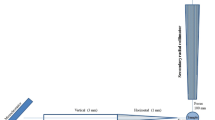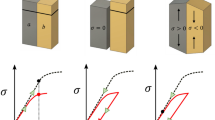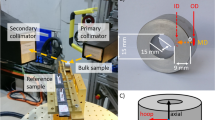Abstract.
Neutron diffraction is a non-destructive method for determining residual stresses in crystalline materials. It is a relatively new technique and no standard is currently available for making these measurements. This paper gives the background to research that has been carried out to develop a standard. It outlines the main findings and indicates the precautions that are required to achieve accurate positioning and alignment of specimens (and components) in a neutron beam and the analysis required to obtain reliable results. It also shows that special attention is needed in dealing with near-surface measurements because of surface aberration. It is demonstrated that, provided the recommended procedures are followed, a positional tolerance of ±0.1 mm can be achieved with an accuracy in strain of ∼10-4, to give a resolution in residual stress of ∼7 to 20 MPa in most materials of practical interest.
Similar content being viewed by others
Author information
Authors and Affiliations
Additional information
Received: 3 July 2001 / Accpeted: 24 October 2001
RID="*"
ID="*"Corresponding author. (E-mail: g.webster@ic.ac.uk)
Rights and permissions
About this article
Cite this article
Webster, G., Wimpory, R. Development of procedures for the measurement of residual stress by neutron diffraction . Appl Phys A 74 (Suppl 1), s1227–s1229 (2002). https://doi.org/10.1007/s003390101211
Issue Date:
DOI: https://doi.org/10.1007/s003390101211




